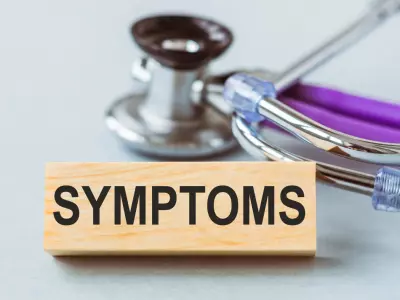Have you ever wondered if your exercise routine is helping or hindering your hormonal health? Are you doing too much? Not enough? You’re definitely not alone — it can honestly be really confusing to figure out what’s best for your body.
Table of Contents[Hide][Show]
- Hormones and Their Role in the Body:
- The Exercise-Hormone Connection: Finding the Goldilocks Zone:
- Hormonal Response to Exercise:
- Too Little Exercise: Effects on Hormones:
- Too Much Exercise: Hormonal Imbalances and Overtraining:
- Best Types of Exercise for Balancing Hormones:
- Finding the Balance: Exercise Recommendations for Hormone Health:
- Personalized Approach: Listening to Your Body:
- Case Studies: Real-Life Examples:
Hormonal health is a cornerstone of overall well-being, influencing various bodily functions such as metabolism, immune response, and reproductive health. The relationship between exercise and hormonal balance is intricate and multifaceted. In this blog, we delve into the science behind how exercise can influence hormones and explore the delicate balance required to optimize hormonal health. And hopefully it will help you find that sweet spot that works for you.

Hormones and Their Role in the Body:
Hormones act as messengers, coordinating physiological processes throughout the body. Key hormones include insulin, cortisol, estrogen, testosterone, and thyroid hormones. Maintaining hormonal balance is vital, as even slight imbalances can lead to a range of health issues, from mood swings to chronic diseases.
The Exercise-Hormone Connection: Finding the Goldilocks Zone:
Exercise is a potent stressor that elicits adaptive responses in the body. Moderate exercise, in the “Goldilocks zone,” triggers hormesis—an adaptive process where controlled stressors yield positive health benefits. However, both too much and too little exercise can disrupt hormonal balance. Striking the right balance is essential for optimal hormonal health.
Hormonal Response to Exercise:
Exercise influences hormones through various mechanisms. During aerobic exercise, insulin sensitivity improves, aiding glucose uptake by cells. Resistance training stimulates testosterone production, contributing to muscle growth. Cortisol, the stress hormone, increases during exercise but typically returns to baseline after exertion. Chronic stress from excessive exercise, however, can elevate cortisol levels long-term.
Too Little Exercise: Effects on Hormones:
A sedentary lifestyle is associated with detrimental effects on hormonal health. Reduced physical activity contributes to insulin resistance, leading to imbalanced blood sugar levels. Cortisol levels may remain chronically elevated due to lack of stress-reducing exercise. Additionally, sedentary behavior is linked to disrupted sex hormone production, impacting reproductive health.
Too Much Exercise: Hormonal Imbalances and Overtraining:
Overtraining syndrome results from excessive exercise without sufficient recovery. Prolonged overtraining can lead to hormonal imbalances, particularly elevated cortisol levels. Chronically elevated cortisol negatively affects immune function, metabolism, and sex hormone production. Inflammation and oxidative stress are heightened, further disrupting hormonal equilibrium.
Best Types of Exercise for Balancing Hormones:
1. Aerobic Exercise:
Engaging in moderate-intensity aerobic activities such as brisk walking, jogging, or cycling can improve insulin sensitivity and support hormonal balance. Aim for at least 150 minutes per week to reap these benefits.
2. Resistance Training:
Incorporate strength training exercises using weights or resistance bands. Resistance training enhances muscle growth and supports healthy testosterone levels, which are essential for both men and women.
3. Yoga and Pilates:
Practices like yoga, pilates, and mind-body exercises reduce cortisol levels, promoting relaxation and stress management. The mind-body connection established through these practices contributes to hormonal harmony.
4. Interval Training:
High-Intensity Interval Training (HIIT) alternates short bursts of intense exercise with periods of lower intensity or rest. HIIT can enhance insulin sensitivity and stimulate growth hormone release, supporting metabolic health. **Please make sure to not include too much HIIT into your exercise routine, as it can be interpreted by the body as stress and cause significant hormonal imbalance.
5. Flexibility Exercises
Activities like stretching and flexibility-focused workouts enhance blood flow and promote relaxation. These exercises complement aerobic and strength training, contributing to holistic hormonal health. Also, increased flexibility is a sign of longevity — so don’t skip out on it!
Finding the Balance: Exercise Recommendations for Hormone Health:
Moderate exercise is key to supporting hormonal balance. Aim for 150 minutes of moderate-intensity aerobic activity weekly, complemented by resistance training and flexibility exercises. Balancing exercise types prevents excessive stress on specific systems, fostering holistic hormonal health. Prioritize post-workout recovery, as sleep and rest days aid hormone restoration.
Personalized Approach: Listening to Your Body:
Individual responses to exercise vary. Pay attention to signs of overtraining, such as persistent fatigue, decreased performance, and mood changes. Tailor exercise routines to personal needs and preferences. Consult with a naturopathic doctor who can assess your hormonal health and design personalized exercise plans.
Case Studies: Real-Life Examples:
Emily, a 32-year-old professional, experienced irregular periods and fatigue. An assessment revealed overtraining and elevated cortisol levels. A tailored plan reduced exercise volume (less HIIT and spin classes, more walking and Pilates), integrated stress-reducing practices (such as deep breathing and yoga), and improved hormonal balance, leading to regular cycles and increased energy.
Conclusion:
The interplay between exercise and hormonal health is intricate and dynamic. Striking the balance between too much and too little exercise is vital for optimal well-being. By understanding the scientific mechanisms behind exercise’s impact on hormones, individuals can make informed choices to promote hormonal balance, overall health, and vitality.
Need some help figuring out the best exercise plan to support your body and its hormonal balance? Apply to work with me here!









